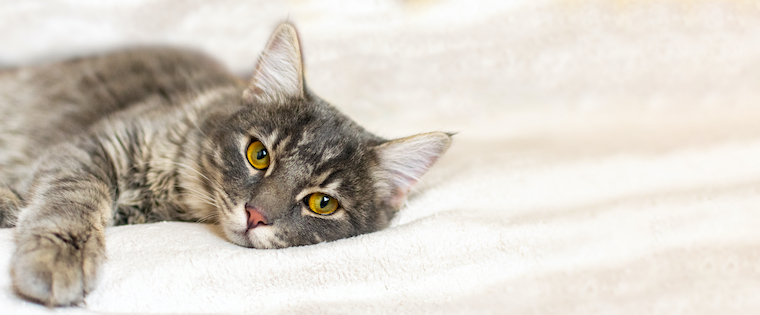In the past, “feline panleukopenia” also known as “FP” or “feline distemper, was a leading cause of death in cats. This is a highly contagious, hardy viral disease caused by the feline parovirus. Today, thanks to the widespread effectiveness of the vaccine, it is less common.
Cats can become infected with FP by coming in contact with blood, urine, stool or even fleas from another infected cat. Additionally, kennels, pet shops, animal shelters and other areas where animals are housed together can be a hotspot for FP. Someone who has handled an infected cat can transfer the virus to another cat through bedding, cages or food dishes. The virus that causes FP is resistant to many disinfectants.
The first signs that your cat may be experiencing FP might include depression or lethargy, loss of appetite, high fever, vomiting, severe diarrhea, nasal discharge or dehydration. A sick cat may sit in front of their water bowl, but not drink much water. At the first signs of any of these symptoms, you should have your cat seen.
Ask my Vet about Feline Distemper Vaccine
Whether your cat lives indoors or outdoors, it’s important to have them vaccinated with the feline distemper vaccine. Cats are at an increased risk during the first few years of their life. At Animal Clinic of Woodruff, we recommend having them vaccinated as kittens, with then with a yearly booster. We work with all of our pet owners to determine the best vaccine schedule for their furry companion. Give us a call to discuss any questions that you have about your cat’s health.













